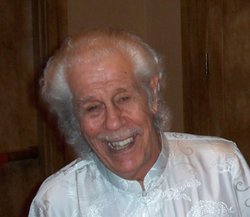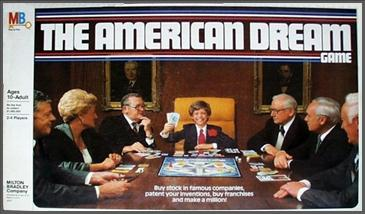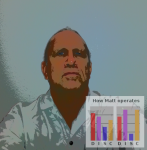|
Bob Picha has been a consultant to business, education, and government for forty years. His consulting company is Ideas At Work. His specialty is improving individual and organizational performance and his clients, numbering in the hundreds, have included IBM, AT&T, McDonald’s, and Lake County Technology Campus. Half of this time was spent in the food service industry with flagship clients like McDonald’s where he developed a national productivity model, a systems approach to productivity. It was at McDonald’s where Mr. Picha developed an appreciation and passion for the systems approaches that drive high quality standards in product, service, cleanliness, and value. The most impressive aspect of this work was the fact that the primary energy came from large numbers of part-time high school workers who displayed enormous capacity for achievement. Aligned with his work with high performance organizations and world class skills, in 1980 Mr. Picha founded PychoGraphics Corporation, with a focus of developing software programs for career assessment for students and employees. The software integrated the knowledge of high performance skill requirements with individual strengths. As an early adopter to the internet, this process became available on the internet in 1995. In addition to his consulting work, Mr. Picha founded Progressive Learning Concepts, a non-profit company, to advance accelerated learning techniques. He also served as a director of the Classroom of the Future Master Foundation, a collaboration with AT&T, to advance education through the use of leading edge technology. His latest work is an effort to establish an internet forum for information resources on world-class skills. He is working with a network of several hundred business and educational consultants advancing processes for high performance organizations. He has developed five national networks of business and educational consultants. Bob Picha… founder of IDEAS AT WORK and president of Psychographics Corporation, has been using DISC Theory for over forty years with his clients in business, education, and government. In 1978 he approached Dr. John Geier with the idea to train consultants and counselors in the use and distribution of Geier’s self-development instruments. As a result, The Performax National Professional Network was launched in 1978. In 1980 Mr. Picha became acquainted with the Cleaver DISC model as well as other historical approaches to the 1928 Marston theory. This man and his theory has affected the lives of more than fifty million people. In 1981 Mr. Picha began teaching the the “The Advanced Institute of DISC Theory”. He authored a booklet , The Energy Model, which integrated DISC theory into the utilization of our greatest energy source, human energy. Mr. Picha now presents THE UNIFIED DISC MODEL as an attempt to identify and unify the applications of the two predominant historical DISC approaches. Since 1995, Mr. Picha has reached individuals and organizations with online assessments revealing how and why people do what they do. This information allows a person to identify their Greatest Personal Asset and apply it for greater results with less effort. This work produced the development the “7 Fundamental Principles of Human Behavior” and “The Human Energy Model” which expands on the law of least effort. Mr. Picha has recently authored two ebooks of the Human Energy Model Trilogy….Career Freedom and Chill. Listed below are some of Mr.Pichas’s beliefs.
In Ron’s interview with Simages magazine, he discuss how he see’s the role of simulation gaming in social education today.
Ron Stadsklev, who was born in a very poor area of Minneapolis by parents of slight education, was well-acquainted with the cloistering effect of ghetto life he would later teach to students through simulation games. A sense of where he could go with his education (plus his father’s insistence that one place he would go was to college) supplied him with what he would later call autotelic, or self-directed, inquiry that led him to become, soon after graduating from Chicago’s Concordia College, the sole teacher in a one-room schoolhouse in Alpena, Michigan. The sponsoring church was encouraged enough by Stadsklev’s work there to erect an entirely new four-room school with cafeteria, theater, and large gymnasium and to make him the principal. After five years building up the facility, Stadsklev sought further experience as an elementary and secondary teacher (and basketball coach) in the Army Dependent Schools in Bremerhaven, Germany. When he was offered an assistant professorship at Concordia College (this time in Seward, Nebraska), he returned to the States in 1963 to coordinate student teachers, develop the teacher training laboratory curriculum, and teach in the experimental high school. It was at Concordia that Stadsklev stumbled upon the usefulness of simulation games in the classroom. Certainly he was already familiar with the regular kind: as a boy, he had spent much of his earnings accumulating a closet full of non-educational games, which he played as much for the chance to carefully document the scores as he did to win. Only now, in the sobering light of responsibility and human nature, he found himself “up to here with the inadequacies and meaninglessness of the conventional system. If there really [was] a system, it [was] just to keep jumping from one log to another–survival.” Students felt trapped in an endless maze of arbitrary requirements, or a home life or job without promise. Only two things suggested to Stadsklev a way out: his license to experiment with teaching methods, and a paper he discovered by James S. Coleman: “Relationship between Games and Learning.” When Stadsklev tried out his new Coleman-inspired Constitution Today game on the most boring part of his history class, the results spurred him to more experiments and an innovative thesis, A Comparative Study of Simulation Gaming and Lecture Discussion Methods, that in 1970 earned him an M.S. in Education from Northern State College in Aberdeen, North Dakota. More importantly, the research for that thesis was probably responsible for landing Stadsklev one of only two prized year-long internships (1968‒69) offered by the Social Science Education Consortium (SSEC) at the University of Colorado, where he “was responsible for becoming a leading authority on simulation gaming and how it relates to the new social studies curriculum being developed.” Money was made available to travel anywhere in the country to interview people in the field. Thus began fifteen years as an independent field consultant for such agencies as the Institute for World Order and the SSEC itself, though perhaps the greatest beneficiaries were the students in Stadsklev’s high school classes back at Concordia. The high school was closed in 1973 for lack of federal funding, and as Stadsklev was faced with the prospect of “teaching Pestalozzi” to education majors by traditional methods, he gladly accepted an offer from the University of Alabama as the Director of Experiential Learning Projects at the Institute of Higher Education Research and Service. Though the salary was not much, he was granted a suite of offices and workers, unlimited travel expenses for research, unlimited time off for his own consulting work, and 80 percent of the profits from any writing he might publish! More importantly, he also greatly respected the visionary IHERS director who had hired him. Besides continuing his field consulting, Stadsklev presented papers at numerous symposia, served as editor (and sometimes contributing editor) of several periodicals, and joined the boards of the prestigious Society for the Advancement of Games and Simulations in Education and Training (SAGSET) and the North American Simulations and Gaming Association (NASAGA). Of Stadsklev’s several publications, by far the most important is his two-volume Handbook of Simulation Gaming in Social Education (textbook, 1974; directory, 1975), containing articles by Stadsklev himself, James Coleman, Garry Shirts, and others, and (volume two) cross-referencing the salient aspects of nearly all the simulation games about social education known at the time. The books were used as texts in colleges and universities all over the world and earned the University of Alabama, which published them, more money than was contributed by any other faculty member. Stadsklev himself was nominated for Outstanding Scholar of the Year at the University and gained in prestige, not just as a major prophet of the coming kingdom of simulation games, but as the inventor of an indispensable technique for debriefing the students who play them. In 1976 an early federal grant from the Fund for the Improvement of Post-secondary Education (FIPSE) allowed him to design and confirm a much-praised simulation gaming method to select guidance counselors for the educationally disadvantaged. His attempt to infuse realism into popular recreation was published by Milton Bradley in 1979 as the American Dream Game. It is emblematic of Stadsklev’s whole life that one of the most important projects he worked on at the University was Project Outer Limits, a sustained investigation into human potential and its consequences for educational strategy. The conclusion of the project was that 1) we have no data to support a strict idea of human limitation and 2) our potential may lie as much in “inner” structures like sub-atomic particles and neurophysiology as it does in “outer” structures external to ourselves. These insights coincide with Stadsklev’s emphasis on self-direction, but they also mark the trajectory his whole life has taken. In 1984, when funding for experimental education again dried up and Stadsklev again found conventional pedagogy stultifying, he again sought to reinvent himself, this time in San Diego as founder and owner of an ecology consulting service that introduced recycled paper into the region. Retirement in 2002 has meant only more projects: though gone are the years of boxing, race car driving, and horse breeding, Stadsklev plays regularly with the Senior Olympic Basketball Team and has worked in Poland and New Zealand building houses for Habitat for Humanity. These days he gives as well as he gets in the many discussion groups he belongs to, and continues to invent his own games several months out of the year while working with students in China.
Matt Stadsklev grew up during the era of the space race, always curious of how things worked, tearing things apart and correctly putting them back together. He also built model rockets. He attended three different high schools in three years. Always remaining curious about electronics, he began his journey.
UCSD’s CRL (Center for Research in Language) with Rita Ceponiene – for 10 years, Matt provided technical expertise for Ceponiene’s project at PCND (The Project in Cognitive and Neural Development), including programming several stimulus / response experiments which collected EEG data from participants; writing programs to manage and display the EEG data and designing and building small circuit boards used in these experiments. Matt’s current projects: Converting books to ebooks; setting up self-publishing on Amazon. In summary, a note from Matt: Throughout all of these work experiences, I realize how much I enjoy the entrepreneurial approach to work. It is what brings to my life satisfaction and fulfillment…. and a great deal of fun. Creatively finding solutions and means to work with and assist others It is who I am. |
|||||||||
|
Leave a Reply |
|
|





